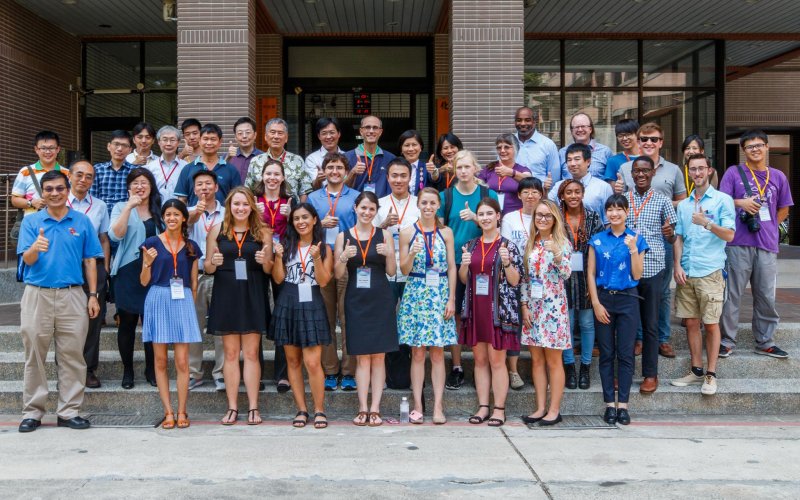UAlbany Graduate Students Reflect on PIRE Experience in New Paper

ALBANY, N.Y. (Aug. 25, 2022) — A cohort of University at Albany graduate students published a new paper that reflects on their first-hand experiences as part of the U.S.-Taiwan Partnership for International Research and Education (PIRE) program.
Announced by U.S. Senators Charles E. Schumer and Kirsten Gillibrand, the 5-year, $4.5 million U.S.-Taiwan PIRE project was launched in 2015 to advance research in early warning detection and disaster response around extreme storms. The project, funded by the National Science Foundation, was led by UAlbany in partnership with several universities and disaster and weather forecast agencies in both the U.S. and Taiwan.
Through the PIRE program, dozens of students from participating institutions were offered travel and living expenses to study abroad and complete research internships under the mentorship of faculty at partnering institutions.
The program concluded in 2021, after being renewed for an extra year due to pandemic travel restrictions. However, collaboration opportunities continue today through a joint degree program established between UAlbany’s Department of Atmospheric and Environmental Sciences (DAES) and National Taiwan University.
The Student Perspective
The new paper was published in the Bulletin of American Meteorological Society (BAMS) by six graduate students, four at UAlbany and two at Howard University. It offers a set of broad recommendations to enhance interinstitutional and interdisciplinary research opportunities for students and investigators, using the U.S.-Taiwan PIRE program as a case study.
Their recommendations focus on three categories: project structure and goals, interdisciplinary framework, and communication. The paper highlights both strengths and areas for improvement to consider in the future.
“This idea originated from our PIRE graduate student meetings,” said Lexi Henny, a sixth-year graduate student at DAES and the paper’s first author. “We had been sharing our research results and travel experiences with each other from early on in the project and wanted to find a way to contribute to the program, collectively.”
“We eventually settled on writing a retrospective paper to help encourage more large-scale, interdisciplinary programs.”
PIRE Graduate Outcomes
Henny successfully defended her thesis and is graduating later this month with a PhD in Atmospheric Science. She has been selected for a NASA postdoctoral program in Greenbelt, Maryland that will start in the fall.
Her other co-authors are taking their PIRE experiences with them post-graduation as well.
Lauriana Gaudet, a July 2021 Atmospheric Science PhD graduate, continued at UAlbany as a postdoctoral research associate until April. She is now working in the private sector as a meteorological data analyst for The Weather Company, an IBM Business.
“I think the PIRE experience really opened my eyes to the importance of interdisciplinary, collaborative research,” said Gaudet. “I’m seeing it in my job now. There will often be three to five teams of researchers tackling a single project. That integration makes it much easier for us to achieve our goals.”
Kevin Lupo, who also earned a PhD in Atmospheric Science last summer, is now a postdoctoral researcher at the National Center for Atmospheric Research, a federally funded research and development center in Boulder, Colo.
He echoed Gaudet’s thoughts on the PIRE experience.
“Through PIRE, I not only became more aware of interdisciplinary projects, but also gained a new appreciation for research that can be easily communicated to emergency managers, or other groups who can use it to make a difference within their communities.”
“My advice to students is to keep an open mind. When this project first started, I was super interested in the research but hesitant about the far travel. Looking back now, it was both a positive and valuable intercultural experience.”




